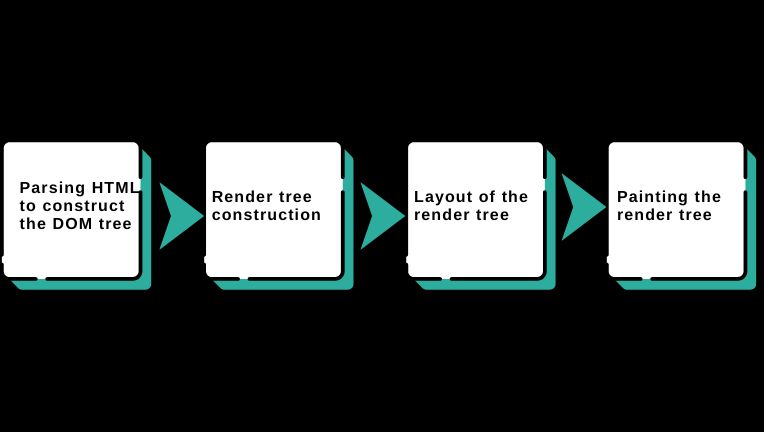When you browse the internet—whether you’re engrossed in a blog post, admiring photos, or engaging with interactive content—you are interacting with webpages that are visually rendered by your browser. The core component responsible for this transformation is the rendering engine.
Think of a rendering engine as a skilled artist. The artist’s canvas is the browser window, and the raw materials are a webpage’s HTML and CSS code. Just as an artist interprets a sketch to create a vibrant and detailed painting, the rendering engine interprets a website’s HTML (the structure) and CSS (the styling) code. This process constructs and presents the webpage as a visually appealing and interactive experience on your screen.
This engine diligently parses the code, meticulously layering elements and applying styles to bring the digital canvas to life. For every image, text block, button, and link, you see results from the rendering engine’s intricate work, seamlessly translating code into the cohesive and interactive web pages that form the fabric of the internet.
A rendering engine is a critical component of a web browser’s architecture, tasked with interpreting HTML and CSS files to render and display websites or 3D objects. This engine is the driving force behind how a webpage’s layout, color scheme, fonts, and overall visual presentation are translated from raw code into the graphical interface we interact with.
Prominent examples of rendering engines include WebKit, Blink, and Gecko, each known for their unique capabilities and contributions to the web browsing experience. Beyond mere translation of code, these engines play a pivotal role in ensuring that websites are compatible and display consistently across a wide range of devices and screen sizes. This adaptability is crucial in today’s diverse technological landscape, where users access the internet through various platforms, from desktop computers to smartphones and tablets. Rendering engines bridge the gap between code and visual experience, making the web accessible, functional, and visually appealing across different browsing environments.
How Does a Rendering Engine Work?
When a user initiates a request for a specific document or webpage, the rendering engine commences its operation by retrieving the content of the requested document. This retrieval process is conducted through the networking layer of the browser.
The unique aspect of this process is that the rendering engine doesn’t wait to receive the entire document in one large block. Instead, it receives the content in manageable segments, typically 8 KB (kilobytes) chunks. This method of receiving data in smaller portions is efficient and allows for more streamlined content processing.
Once the initial chunk of data is received, the rendering engine embarks on its fundamental workflow. This involves parsing the received chunks, building the Document Object Model (DOM), interpreting the CSS to form the render tree, and then systematically painting the webpage on the screen. This segmented approach to data retrieval ensures that the rendering process can begin promptly, enhancing the user experience by progressively displaying the webpage as more data continues to arrive and is processed.

The rendering engine’s operation can be distilled into four fundamental steps:
- Parsing the HTML Document: The rendering engine parses the HTML page in segments. This includes the HTML and any external CSS files and inline style elements. During this process, HTML elements are transformed into DOM nodes, creating what is known as the “content tree” or “DOM tree.” This tree represents the structural layout of the HTML document.
- Creation of the Render Tree: Concurrently, the browser constructs a render tree. This tree is significant because it integrates the styling information from CSS and the visual instructions necessary for determining the display order of elements. The render tree is pivotal in ensuring that content is displayed in the correct sequence and manner as intended by the webpage design.
- Layout Process: After the render tree is formed, it undergoes the layout process. Initially, the render tree lacks specific position or size attributes for its elements. The layout process involves calculating these values to determine each node’s precise position and dimensions. This meticulous process ensures that each element is accurately positioned on the screen according to the webpage’s design.
- Painting the Screen: The final stage involves painting the elements onto the screen. In this step, the rendering engine traverses the render tree, and the paint method of each renderer is invoked. This method uses the UI backend layer to draw each element on the screen.
It’s important to note that each browser uses its own distinct rendering engine. Consequently, these engines may interpret and display webpages slightly differently. This diversity challenges web developers, who must ensure cross-browser compatibility to provide a consistent user experience across various browsers. This aspect of web development requires careful consideration and testing to ensure that a website looks and functions as intended, regardless of the browser used.
Conclusion
Understanding the rendering engine’s role and operational process offers a more profound appreciation of the web’s inner workings. This knowledge enriches your browsing experience, revealing the complexity and ingenuity behind what appears on your screen. The entire sequence, from the initial parsing of HTML code to the final rendering of the webpage, unfolds in just a few milliseconds.
This rapid processing is precisely why, when you click on a link or enter a URL, a fully realized webpage appears almost instantaneously. It’s a remarkable demonstration of the rendering engines’ power and efficiency, enabling the seamless and swift delivery of content to your screen.
We welcome your thoughts and feedback on this topic. If you have any insights or suggestions or come across any outdated information, please feel free to share your comments below. Your input is invaluable in ensuring the continued relevance and accuracy of the information provided.
- Reladyne Nova 1050 Engine: Starfield - April 30, 2024
- Reladyne Nova 1040 Engine: Starfield - April 30, 2024
- Reladyne Supernova 2000 Engine: Starfield - April 30, 2024


